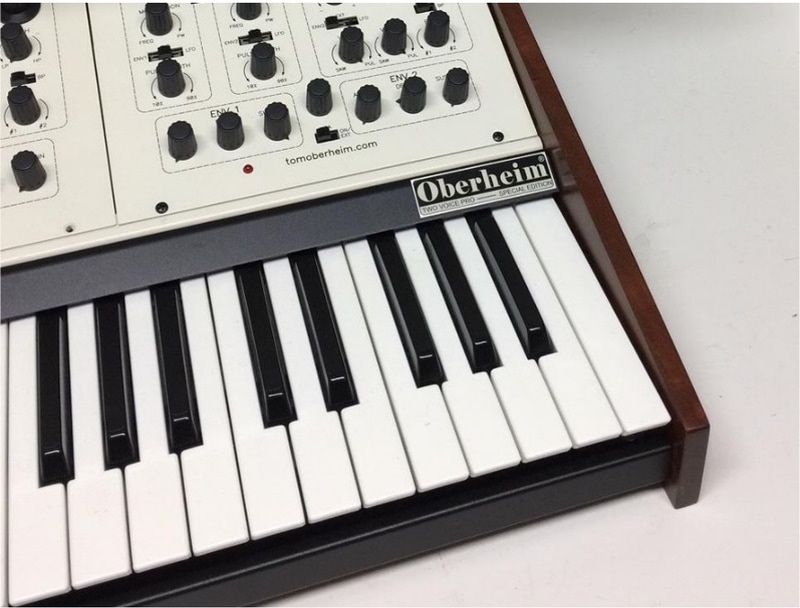You can’t keep a Two Voice down. The 1975 classic saw a modern reissue by its original creator a few years back. And now it’s back in production again, while also marking the return of the beloved Oberheim badge.
Believe it or not, it isn’t all that easy to keep control of your own name, because of how trademark law works. I mean – not sure how to word this exactly, but it’s possible that some other company might come along and take your name. Yeah, I know, the one you’re born with – crazy, right? Not that I’d know anything about that.
Anyhoo – leaving discussion of trademark trolls aside, whoever those might be, Tom Oberheim is again selling synths with the iconic 70s logo. I have to say, it’s one of the classier-looking affairs in synth history.
There’s a demo of the new one, but let’s listen on this one from 2016:
Returning this to Tom means that Oberheim rejoins two other Bay Area synth brands – Roger Linn Instruments and Sequential (formerly Dave Smith Instruments) – currently actively producing products under the supervision of their original founder. That’s not just a bit of trivia – Tom, Dave, and Roger have been known to meet up for coffee in Berkeley, back when we were all allowed to do that sort of thing without endangering one another. (It’s also worth noting that Tom deserves some credit alongside Dave and Roland for helping champion the emergence of MIDI.) And Oberheim rejoins the likes of Moog and Buchla in reclaiming a historical brand and making new stuff.

That history and those connections have shaped a lot of the synths we use today. And they’ve left a legacy of other people, too, not just the names you know. Tom very humbly says on his product website’s history section, that the people who helped him make the products deserve credit – “the creative, hard-working engineers, technicians, and support people that have helped me so much over the years at my three companies.”
And that itself is important. Synth history isn’t just a series of frozen snapshots in time, but the connections we make with one another. I know we feel that especially strongly now when those connections are so often remote.
The Sequential OB-6 made by Oberheim with Dave Smith is still the one most of us would consider buying – and to be honest, it’s way up at the top of the list of instruments I’d want to play right now. (On top of that, the firmware update the OP-6 got with MPE and extra filter mode is now shipping.) The Two Voice is going to be more of a limited edition luxury.
But what a luxury that Two Voice is. It’s remarkably ahead of its time – the notion was to put two of the voice modules together with a sequencer to make a clever all-in-one performance keyboard. That could have come off of a 2021 product release. The smart part is, it works as a two-voice poly keyboard, as a 2-voice sequencer, or with one synth track and one sequencer track – so you play one voice from the keyboard and one with the sequencer. And you can use the keyboard for transposition. Plus it has ample modulation sources – two envelopes, two LFOs, a noise generator and a sample/hold.
The TVS Pro, the 2016 reboot, added more performance features – a velocity-sensitive Fatar keyboard with aftertouch, improvements to the sequencer (with two channels and 16 steps plus song abilities). You get eight, sixteenth, and triplet ratchet modes, so you escape some of the rhythmic monotony of the 70s – and a ton of patching and MIDI.
It’s really one of the more perfect modern instruments. The Special Edition gets a limited run and personal signatures from Tom – pricing and delivery to be announced.
But there’s something great about seeing that logo again, on a machine that Tom got his hands on – plus all the other folks he honors on that history site.
https://www.tomoberheim.com/products